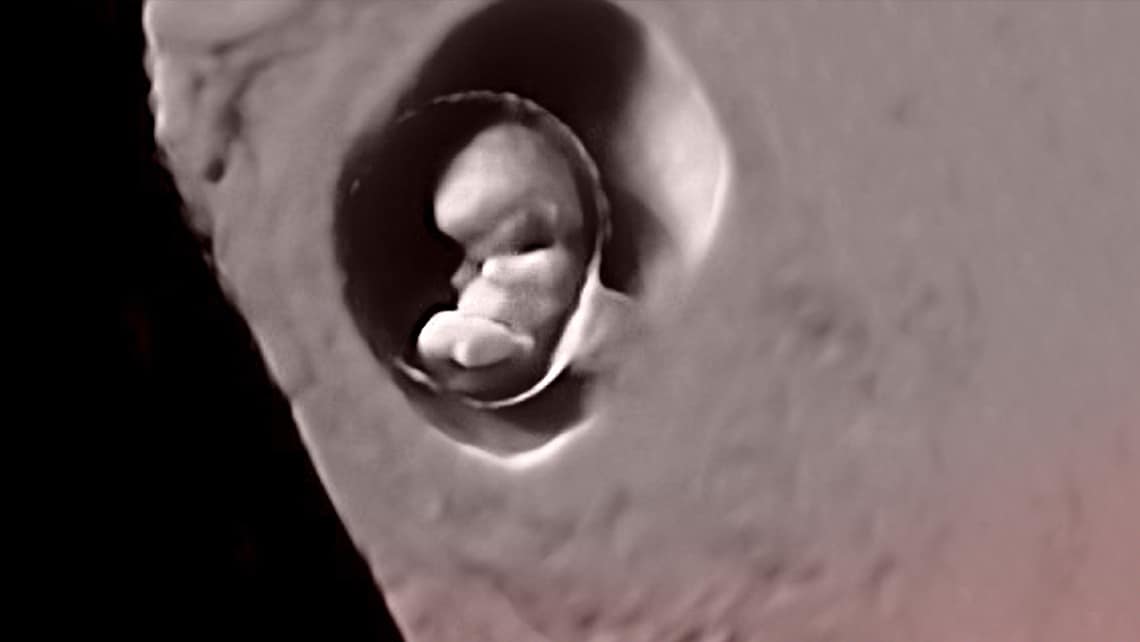
The miracle of embryo implantation
Embryo implantation is the process in which the human embryo adheres to the endometrium, where it continues developing. The first step of this process begins with the dialogue between the embryonic and maternal cells.
This is an extremely complex process that is currently only partially known and depends on the embryo quality, uterine receptivity and their synchronisation.
The key to this process is determined by many molecules segregated around the endometrium and embryo that must be perfectly synchronised in order to maintain this dialogue between the embryo and endometrium.
If we consider that the implantation can be a conversation with perfectly designed words and letters, we can picture its sentences as the stages of implantation and the words as the molecules involved in each state.
Índice
Apposition or receptivity dialogue
It begins with the dialogue between the embryo and endometrium, which acquires receptive properties through local growth hormones and factors. This phase is called apposition and is where known factors come into play, such as Natural Killer cells, immunoglobulins and granulocyte colony-stimulating factors.
Embryo adhesion to endometrium
The next stage is called embryo adhesion, in which the embryonic cells look for the best place to adhere to the endometrium, the inner layer of the uterus, through its receptors.
In the next stages the embryo first has to induce the destruction of the surface layer of the endometrium and then invade the deeper levels until it reaches the blood vessels that irrigate it.
Despite all the conducted research, there is still limited knowledge about the molecules involved in each process and their importance.
Nesting requirements: receptive endometrium and evolving embryo
There’s no doubt that, as we learn more about how embryo implantation is produced, it seems a miracle. How is it possible that there’s 7700 million people in the world conceived in such a complex way? Many patients with fertility problems, when they learn first-hand how difficult conception is after a reproduction treatment, ask this question to themselves and, many of the professionals who treat infertility and value every achieved pregnancy as a true miracle.
Indeed, to allow the embryo settling in the endometrium, many complex and synchronized events must take place. It can be summarized in a receptive endometrium along an evolving embryo.
Endometrial receptivity
First, it’s essential to have a receptive endometrium. Although, nowadays a correct definition for this term is still difficult to find, it is known that there’s a variable period (between 3 – 5 days) on which the embryo implantation is possible.
How to know when the implantation window is open?
Progesterone is the key hormone which makes possible for the endometrium to enter into a new phase called secretory and become receptive, although obviously, this phase is not the only one. Likewise, the implantation window previous phase is as important, the estrogen quantity makes the endometrium acquire the suitable proliferation for nesting, whilst the endometrium receptivity window will be defined when progesterone prevails over estrogen.
However, estrogen and progesterone are not the only ones involved in this receptivity, both the immune system and the vascular system play a very important role on this process.
Evolving embryo
As well as having a receptive endometrium synchronically, is necessary to have an evolving embryo to do the hatching inside the endometrial cavity. The embryo hatching takes place when it comes out from its zona pellucida, which is the external layer covering the embryo. Is only in this state when the endometrium can start contact with embryo wall and begin the implantation phases (Apposition, Adhesion and Invasion).
Although is not a complex process and not completely understood, Instituto Bernabeu is completely involved to achieve a perfect coordination in an embryo transfer scheduling. Endometrium preparation, with endometrium volume measure, progesterone analysis and uterine contractility gives an individualized and better knowledge about the endometrium receptivity. Furthermore, the embryo transfer of hatched embryos along its genetics analysis (PGD) improves selection to let the miracle of pregnancy take place.
Treatments to favour the embryo nesting into the maternal endometrium
Most clinical treatments are designed to be included in the apposition phase, in which they aim to increase endometrial receptivity by either administering influential substances in this step or inhibiting others that may adversely affect it. It’s important to be extremely cautious since these are experimental treatments that have yet to show clear therapeutic benefits. The side effects of some proposed therapies should also be considered. Therefore, it is important to apply treatments based on evidence. A clear example of this can be seen in the use of immunosuppressants, meaning drugs that change the organism’s immune response against high counts of Natural Killer Cells that have proven ineffective and cause adverse side effects.
Non-invasive ultrasound markers have been proposed in order to study the microvascularization and uterine structural pattern.
At Instituto Bernabeu, we have applied powerful technology to high-precision ultrasound equipment, which provides us with reliable studies of the endometrial structure to diagnose and treat uterine defects that hinder or block the implantation process.
These studies are extremely useful to patients who have gone through previous treatments without achieving embryo implantation and to those who have had repeat miscarriages.
Dr. Belen Moliner, gynaecologist of Instituto Bernabeu
IT MAY ALSO BE OF INTEREST TO YOU
